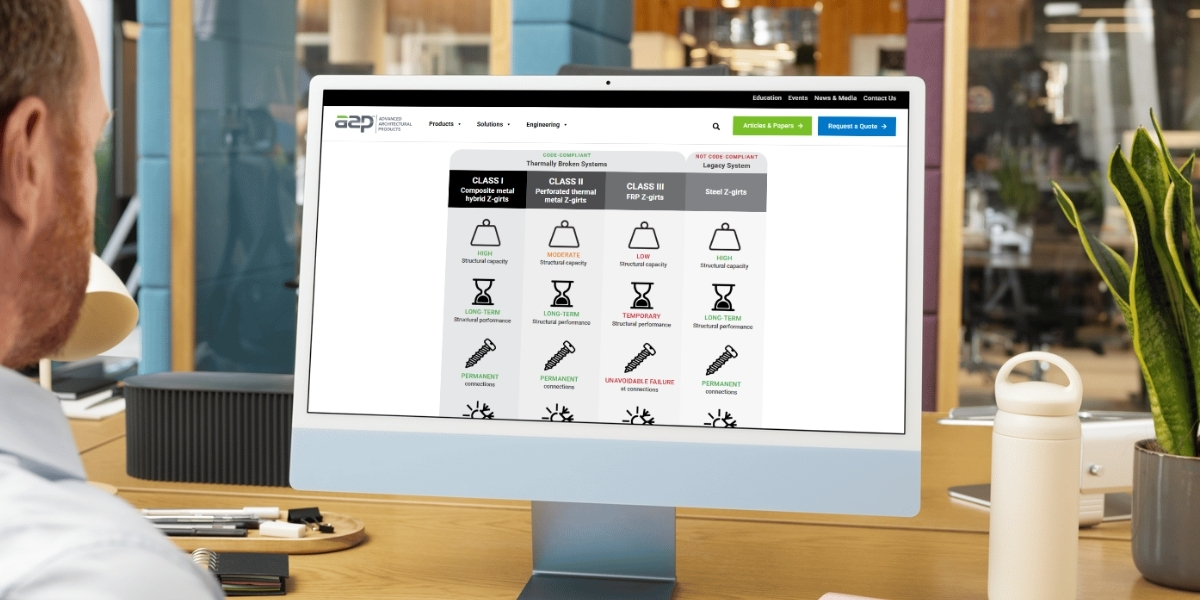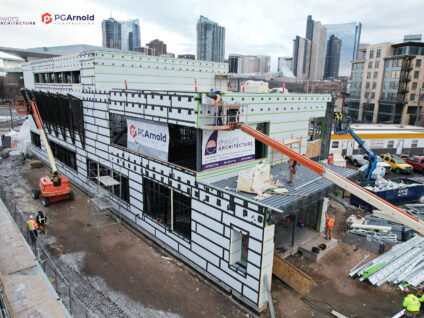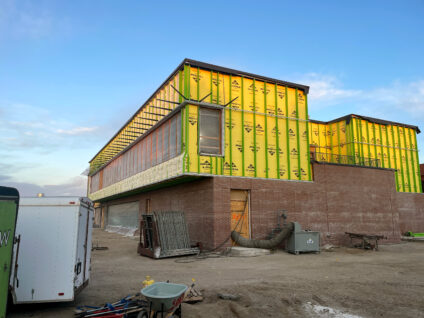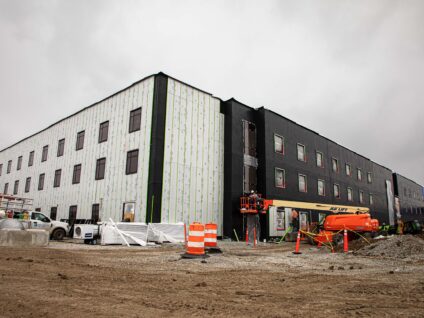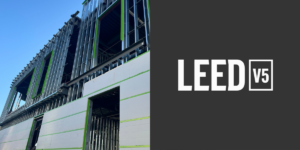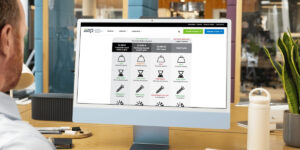Selecting a continuous insulation Z-girt system can be challenging due to the wide variety of systems available. Each system is suited for different project needs, such as location, building codes, and costs. To help contractors and architects choose the right Z-girts, Advanced Architectural Products has created an interactive classification chart that divides Z-girts into three classes based on key performance criteria. The goal of this article is to introduce the classification chart by defining the three classes of Z-girts based on six performance criteria and provide support in using this chart for selecting Z-girts for future projects.
Defining Class I, II, & III
Class I – Composite Metal Hybrid Z-Girts
Class I on the chart includes composite metal hybrid systems. These code-compliant systems combine the strength of steel in their metal flanges with the thermal efficiency of fiberglass to create one effective system that exceeds all performance requirements of any project. CMH Z-girts have high structural capacity, long-term structural performance, permanent fastener connections, and high static thermal performance. They also eliminate thermal bypass and pass NFPA 285 testing in most wall assemblies. For those seeking a continuous insulation system that prioritizes both structural integrity and thermal efficiency while exceeding expectations in other performance categories, Class I CMH Z-girts are an effective option for a variety of buildings.
Class II – Perforated Metal Z-Girts
Class II consists of perforated thermal metal Z-girt systems. These systems rely on the strength of metal for durability, and perforations in the metal to provide thermal efficiency. Class II systems are code-compliant, and succeed in long-term structural performance, permanent fastener connections, and pass NFPA testing. However, these systems produce moderate structural capacity, moderate static thermal performance, and do not eliminate thermal bypass. Class II Z-girts are an option for buildings that can make limited compromises on their continuous insulation systems.
Class III – FRP Z-Girts
Class III is comprised of Z-girts made exclusively with FRP. These code-compliant systems are effective in providing thermal efficiency to buildings, ranking high in static thermal performance on the classification chart. However, these systems are only moderate in passing NFPA 285 testing, since there is little data available on fire-tested FRP wall assemblies. In addition, FRP systems are low in structural capacity and only provide temporary structural performance – prone to “unavoidable failure” at fastener connections – and do not eliminate thermal bypass.
Steel Z-Girts
The final category on the classification chart is steel Z-girts. These systems are solely metal and are mainly designed for structural requirements rather than thermal efficiency. Steel Z-girts excel in high structural capacity, long-term structural performance, permanent fastener connections, and pass NFPA 285 testing. However, these systems are not code-compliant, provide low static thermal performance, and do not eliminate thermal bypass.
Selecting Z-Girts Based on Performance Requirements
When selecting continuous insulation Z-girts, it is important to be aware of the performance requirements that may lead to choosing one class system over the other. For instance, depending on the location of the project, the project budget, and the specific building codes and performance requirements, certain classes may not be appropriate for your project. Class II and Class III provide certain benefits but require substantial performance compromises, such as thermal efficiency or durability. To mitigate the need to compromise on crucial performance requirements, Class I is the optimal solution for sub-cladding continuous insulation systems because of the composite metal hybrid design that is high achieving in all 6 performance categories. Class I provides buildings with both thermal efficiency and durability, without needing to make sacrifices.
Conclusion
Choosing the right Z-girt continuous insulation system is integral to long-term success in the six performance requirements for buildings. Class II and III Z-girts may provide short-term thermal efficiency or durability for buildings, but the best solution is Class I Z-girts, which excel in all six performance categories without the need for compromise or additional support in any requirement. Class I Z-girts are the leading systems in achieving the highest quality across all performance requirements for future projects.
For more information about A2P’s continuous insulation Z-girt classification chart, visit GreenGirt.com.



